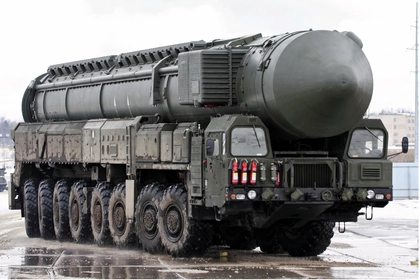The military issues website Defense Express (DE) on Monday, Dec. 23 categorized Russia’s supposedly new Oreshnik medium-range ballistic missile (MRBM) as “made of lies and old reserves.” It says that examination of the remnants of the missile that was used to strike the Ukrainian city of Dnipro on Nov. 21, concluded that Russian President Vladimir Putin’s claim that it was a brand-new weapon “couldn’t be farther from the truth.”
It identified that markings on one of the components recovered from the Oreshnik’s debris contained a serial number and production date indicating it had been manufactured in April 2017.
JOIN US ON TELEGRAM
Follow our coverage of the war on the @Kyivpost_official.

This strongly suggests that the missile was, or its components came from, the nuclear-capable RS 26 Rubezh intermediate-range ballistic missile (IRBM), which some commentators say is the actual missile nomenclature.

Kyiv Says Received Bodies of 757 Killed Ukrainian Troops
It further suggests that the name Oreshnik has been used to cover up the fact that the Kremlin was in violation of the Intermediate-Range Nuclear Forces Treaty along with other projects like the Iskander missiles.
The component marking of “EFIT 302811.002” indicates it was manufactured by the Russian missile and space development enterprise the Scientific Production Center of Automatics and Instrument Building (NPTsAP), which is part of Roscosmos state space industry corporation.
NPTsAP builds control systems used in the Zenit, Proton-M, and Fregat launch vehicles as well as the Topol-M military intercontinental missile.
It seems likely that NPTsAP is involved in the production of Oreshnik: either through the supply of missile control equipment, the multiple independently targetable reentry vehicle (MIRV), the entire missile or other modules.
The BBC says that several experts have posited that the Oreshnik was “cobbled together” from components and sub-systems from several other missiles including the Yars-M inter-continental ballistic missile or its predecessor the Soviet-era Topol ICBM.
The website says that analysis of the fragments of the Oreshnik are continuing and that Ukraine’s technological exploitation is likely to reveal more secrets that could ultimately undermine Russia’s claims of the nature and origin of the Oreshnik.
You can also highlight the text and press Ctrl + Enter






